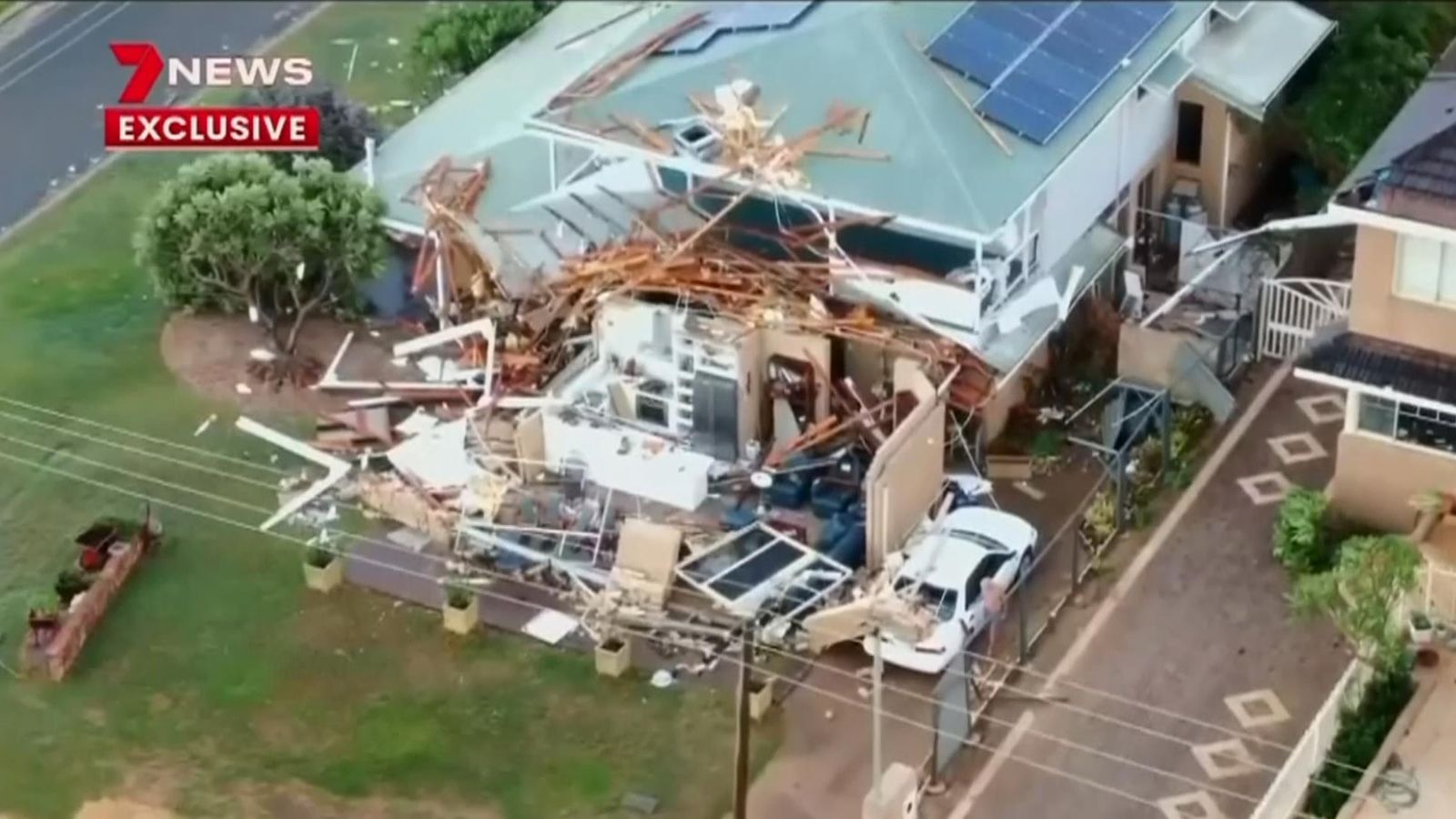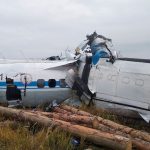A cyclone cut power to tens of thousands of people overnight and destroyed several homes on Australia’s west coast.
Tropical cyclone Seroja damaged 70% of buildings in the coastal town of Kalbarri, the worst hit area, about 310 miles north of Perth, officials said.
Emergency services commissioner Darren Klemm said about 30% of the damage was “significant”.
The area was battered by winds of more than 100mph and received more than 10cm of rain in two hours.
Three evacuation centres were opened ahead of the cyclone and drone pictures of the aftermath showed buildings without roofs and broken powerlines.
The cyclone was downgraded from category three to two after it made landfall and had weakened by Monday morning.
Prime Minister Scott Morrison said on Facebook that the situation remained “very serious” and that the government’s disaster response plan was under way.
The area had been on red alert ahead of the cyclone as buildings there are not built to withstand such storms, which usually don’t come as far south.
The remnants of Seroja will continue to weaken during the morning but is still likely to result in damaging wind gusts, and heavy rain close to the track. A Severe Weather Warning is current at https://t.co/QF3c8gn6tD #CycloneSeroja https://t.co/B1MVXBYXhh pic.twitter.com/uJToRu9eBK
Kalbarri’s red alert ended at about 11am local time (4am UK time) and people were free to leave their homes, but forecasters still warned of some damaging gusts along the cyclone’s path.
The only town where residents were still being advised to stay inside was Northampton, according to Western Australia Today.
The cyclone last week killed more than 170 people in Indonesia after it caused landslides and floods in East Nusa Tenggara province.






















